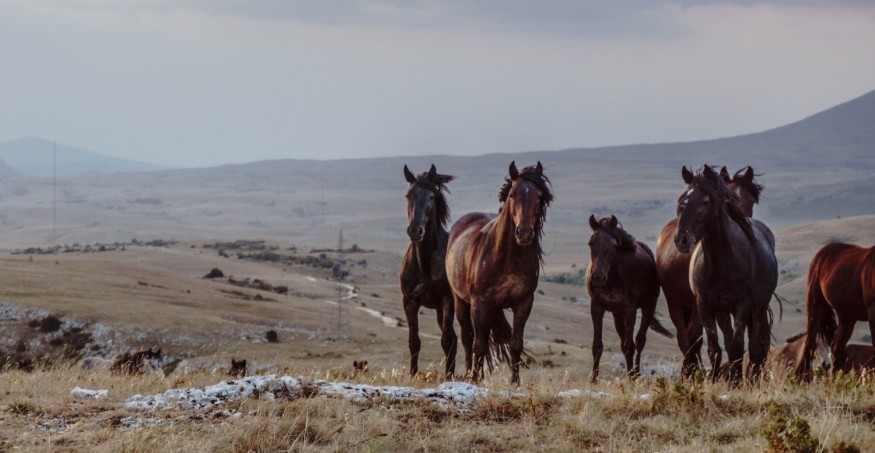Wild horses in Mongolia such as the Przewalski's horse, locally known as "takhi," are making a comeback after conservationists made a decades-long effort to save the animals from extinction. In the 1960s, the local horse population diminished due to excessive hunting. From near extinction to bouncing back, the story of the takhi horses is one of the country's most successful conservation efforts.
Despite the reintroduction Przewalski's horse, the threats of hunting, overgrazing, and climate change are still affecting other of Mongolia's wildlife. The country's challenges when it comes to protecting its wild animals and their natural habitats date back to the 1990s, a time when Mongolia's communist era abruptly transitioned to a free-market economy.
Mining and deforestation (in addition to illegal hunting and overgrazing) have also contributed to the decline of Mongolia's flora and fauna, according to conservation experts from the Zoological Society of London (ZSL). Although international conservation authorities view the wild horse reintroduction a success, there is still a growing concern for the rest of the East Asian nation's wildlife.
Przewalski's Horse Population Restoration

Members of the species Przewalski's horse (Equus ferus przewalskii), also called the Mongolian wild horse or Dzungarian horse, have been restored from total annihilation as part of a conservation project in Mongolia spanning more than 30 years.
Currently, there are almost 1,000 Przewalski's horses at three separate locations in Mongolia, notably 423 individuals in central Mongolia's Hustai national park. The remarkable Przewalski's horse population restoration does not stop in Mongolia. In fact, there are also population centers in neighboring countries like China and Kazakhstan.
The Mongolian wild horse resembles ponies more than horses due to its relatively small size. However, the takhi is ferocious to be captured and confined in zoos. This is also the reason why it has never been tamed, "the only truly wild horse in existence," according to the Smithsonian Magazine.
Wild Horse Extinction
Mongolia's endangered horse species is originally native to Central Asia and are significant to the culture of the region. However, environmental changes and competition with humans and livestock forced the Dzungarian horse to move further east to Asia, leading to the seemingly wild horse extinction in the "wild," according to the National Zoo of the Smithsonian Institution.
Since then, the presence of the Przewalski's horse is only seen in reintroduction sites, mentioned earlier, such as Mongolia, China, and Kazakhstan. According to conservation authorities, Przewalski's horses are the last surviving members or subspecies of wild horse. They are listed as "endangered" on the IUCN Red List, meaning these wild horses are subject for protection and conservation.
Elsewhere in the world, not all horse species share the same conservation challenges. In Australia, the country's wild horses are going through 'overpopulation' and this forced the Australian wildlife officials to cull some of them by shooting from helicopters.
© 2025 NatureWorldNews.com All rights reserved. Do not reproduce without permission.

